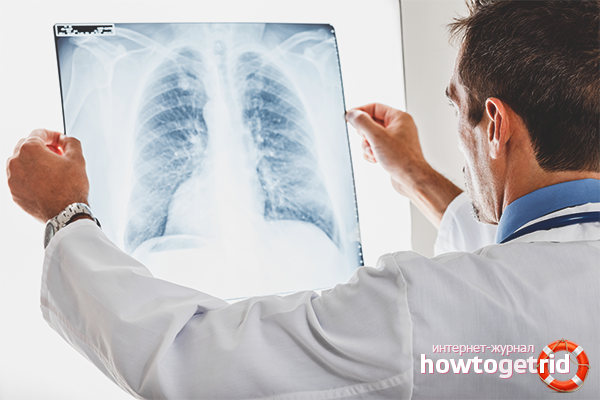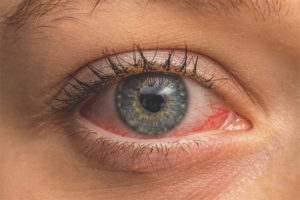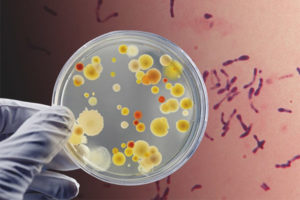The content of the article
Inflammation of the lungs (pneumonia) is an infectious disease of the lower respiratory system that affects various parts of the lung. It is quite difficult to diagnose pneumonia at home, because the symptoms are similar to other diagnoses - whooping cough, tuberculosis, laryngitis, etc. Depending on the pathogen that caused the inflammation, bacterial, viral and fungal pneumonia are distinguished. In general, the lungs are populated by their microflora, and microorganisms contain both bacteria and viruses. But often the immune system can easily cope with small pathogens, inflammation, as a rule, occurs against the background of a weakened body. In this article, we will consider the causes of pneumonia, learn about the symptoms that will help to suggest a diagnosis, and also get acquainted with the main methods of treating pneumonia.
How to recognize pneumonia - the main symptoms
Of course, only a doctor can diagnose such a serious disease, but the patient can suggest the disease for some symptoms. The sooner he suspects pneumonia, the more successful its treatment will be.
Coughing is the main symptom in pneumonia. Cough can be different - dry or wet, it can occur from the first days of illness or develop gradually. But often the cough with pneumonia is obsessive, strong, uninterrupted, it can not be stopped with antihistamines.
With the course of the disease, sputum forms in the lungs. If with bronchitis it is viscous, transparent or whitish, then with pneumonia the sputum acquires a purulent color and smell. In difficult cases, the sputum released has blood streaks - this suggests that the inflammation is very serious.
Inflammation of the lungs is accompanied by a general deterioration of the patient's condition - there is a fever, chills, aching joints, the temperature can rise above 40 degrees.
Pneumonia is often accompanied by chest pain, constricting and acute, especially with bouts of coughing and movement.
Often with pneumonia, there is profuse sweating, breathing and heart rate become more frequent, severe shortness of breath appears. Some patients with inflammation complain that they cannot breathe air fully, they lack oxygen. With a deep breath, acute pain is certainly felt.
Often, pneumonia passes to other respiratory organs, pneumonia is often accompanied by a runny nose.
The peculiarity of pneumonia is that fever occurs from the very beginning of the disease, and many antipyretic drugs simply do not work or the effect of their intake is short-term. The appearance of a patient with inflammation is very painful - a person becomes pale, loses his appetite, loses weight, quickly gets tired, etc. But where does pneumonia come from?
Causes of pneumonia
There are a huge number of microorganisms that can cause pneumonia. First of all, these are bacteria - pneumococci, staphylococci, streptococci. Inflammation of the lungs can develop when an intestinal, Pseudomonas aeruginosa, Haemophilus influenzae enters the body. Klebsiella, Proteus, fungi, legionella - all this can be the cause of pneumonia. But not everyone has inflammation, in most cases, the body independently cope with a harmful bacterium. Only an organism weakened by various factors is affected by the disease.
Inflammation of the lungs in 80% of cases begins as a complication after acute respiratory viral infections and influenza.
Chest injuries and external infection can lead to inflammation of the respiratory organs.
The body becomes weakened while taking alcohol or with prolonged smoking. With constant exposure to nicotine, the lungs become vulnerable, any, even a minor infection develops into inflammation.
Intense physical activity, stress, taking potent medications (antibiotics, chemotherapy drugs) - all this weakens the body.
Circulatory diseases and kidney diseases greatly affect the condition of the lungs, inflammation with such diagnoses develops very quickly.
All these factors become a risk not only for the development of pneumonia, but also for many other diseases. To protect yourself from pneumonia and other diagnoses, you need to abandon bad habits, lead a healthy lifestyle, exercise, eat right. In the fall, before the cold season begins, you should be vaccinated against the flu - the risk of getting pneumonia after the flu is very high. Be sure to observe hygiene measures - wash your hands before eating and after the street, try not to contact with sick people. In periods when human health is particularly vulnerable, crowded areas should be avoided. This includes the elderly, pregnant women, children, patients after infectious diseases, etc.
Diagnosis and types of pneumonia
Inflammation of the lungs is a very serious disease that is difficult to diagnose only by questioning and examining the patient. To make an accurate diagnosis, a person will need to pass a general and biochemical blood test. The analysis and bacteriological culture of sputum will help to recognize the type of pathogen and determine its sensitivity to a particular antibacterial therapy. The localization of pathological changes in the lungs can be determined by x-ray examination. In complex cases, computed tomography of the chest and fibrobronchoscopy may be necessary. The last procedure is the introduction into the lungs of a special optical device that helps to examine the walls of the organ from the inside. This diagnostic procedure is carried out quite rarely, only if conventional treatment does not bring the desired result. All these measures will help to make a more accurate diagnosis, because pneumonia can be different depending on the pathogen, the severity of the disease and the localization of inflammation.
Focal pneumonia. This is one of the most common types of pneumonia when small areas of the lung are affected. The disease develops quickly enough, a cough in a few days from the dry becomes wet, a lot of sputum, it is mixed with pus.
Lobar or lobar pneumonia, when an entire lobe of the lung is affected. The temperature rises to high values almost from the very beginning of the disease. With croupous pneumonia, the pain is felt very strongly, it intensifies with coughing, walking and any movement. This type of pneumonia has its own characteristic features - tachycardia develops, red spots appear on the face or body from the side of the diseased lung, the lips may turn blue, the pain is localized on one side of the chest.
Segmental pneumonia, when pneumonia spreads to several segments of the lung.
Drain pneumonia is characterized by a large number of small inflamed areas that merge together.
Total pneumonia is considered the most dangerous, since a similar diagnosis is made with a complete defeat of both parts of the lungs, total pneumonia can lead to coma and even death.
In addition, there are primary, secondary, post-traumatic and radiation forms of the disease. Primary pneumonia is an independent disease. The secondary form develops against the background of another diagnosis, for example, with bronchitis.The radiation form is associated with the oncological course of the disease. Post-traumatic - when lung ventilation and sputum discharge due to chest injury are impaired. According to the intensity of the course, pneumonia can be acute, subacute or chronic. The disease lasts quite a long time - from three weeks of acute course to several months and even years of chronic manifestations.
Treatment of pneumonia
In order to quickly suppress inflammation and prevent the development of its chronic form, a comprehensive and complete treatment should be carried out. This is especially true for antibiotic therapy. It happens that with the first improvements, patients stop taking antibiotics, this is very dangerous. Not only will the disease very soon develop again, since all painful microorganisms are not suppressed, there will also be persistent resistance to this group of antibiotics, that is, bacteria will no longer respond to them. You will have to look for other drugs to which microorganisms will be sensitive. Without competent antibacterial therapy, suppressing pneumonia is very difficult, almost impossible.
If the pathogen is a virus or fungus, antiviral or antimycotic agents are selected. Together with antibiotics, probiotics are prescribed that protect the health of the intestines. Expectorant and thinning drugs are mandatory - they facilitate the removal of sputum from the lungs. In addition, the doctor prescribes symptomatic treatment - antipyretic drugs at high temperature, cardiovascular drugs for shortness of breath and oxygen starvation, etc. In the acute course of the disease, the patient is prescribed mechanical ventilation.
In the fight against pneumonia, along with medications, alternative recipes can be used. It is very effective to take decoctions of expectorant herbs that thin the sputum and relieve inflammation in the lungs. Among them are licorice, elecampane, marshmallow, oregano, coltsfoot. It is useful to make warming compresses on the chest and back (only not in the heart). You should also follow a sparing diet, bed rest and drink plenty.
In most cases, pneumonia is well treated and does not leave any consequences. However, complications such as pleurisy, bronchial obstructive syndrome, gangrene, or lung abscess can sometimes occur. Therefore, it is very important to consult a doctor in a timely manner, make the correct diagnosis and begin complex treatment!
Video: how to treat pneumonia in a child










Submit